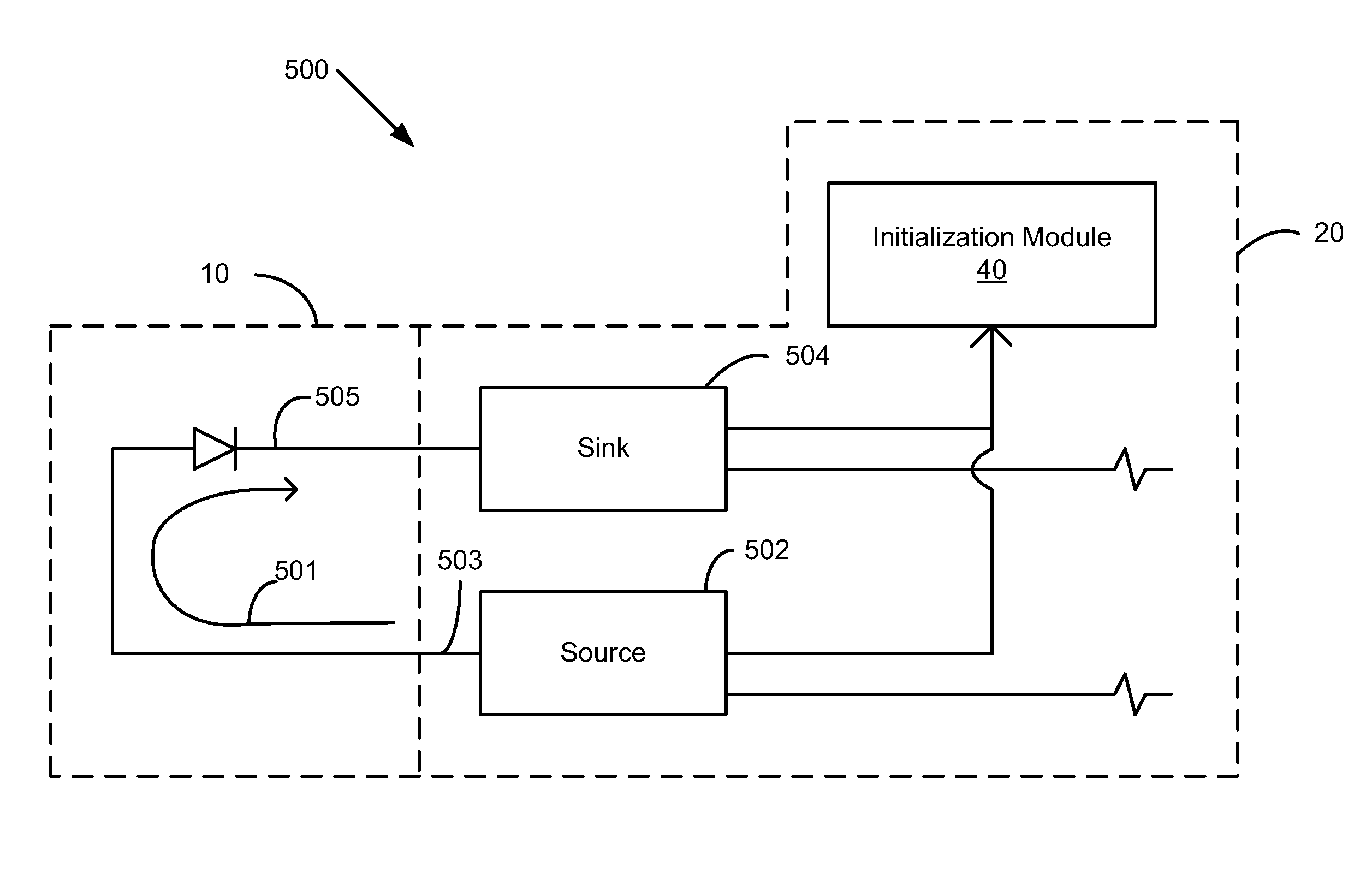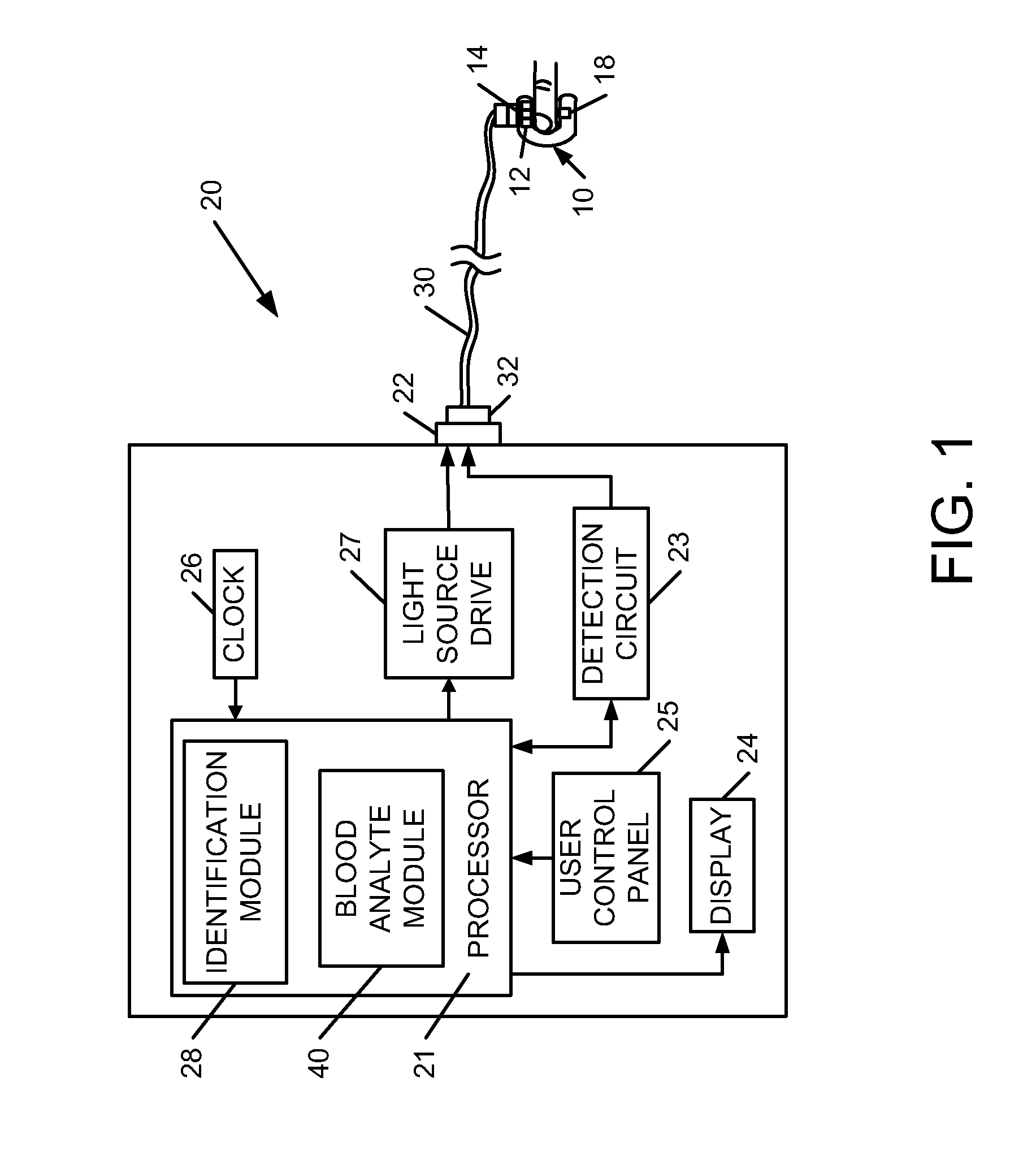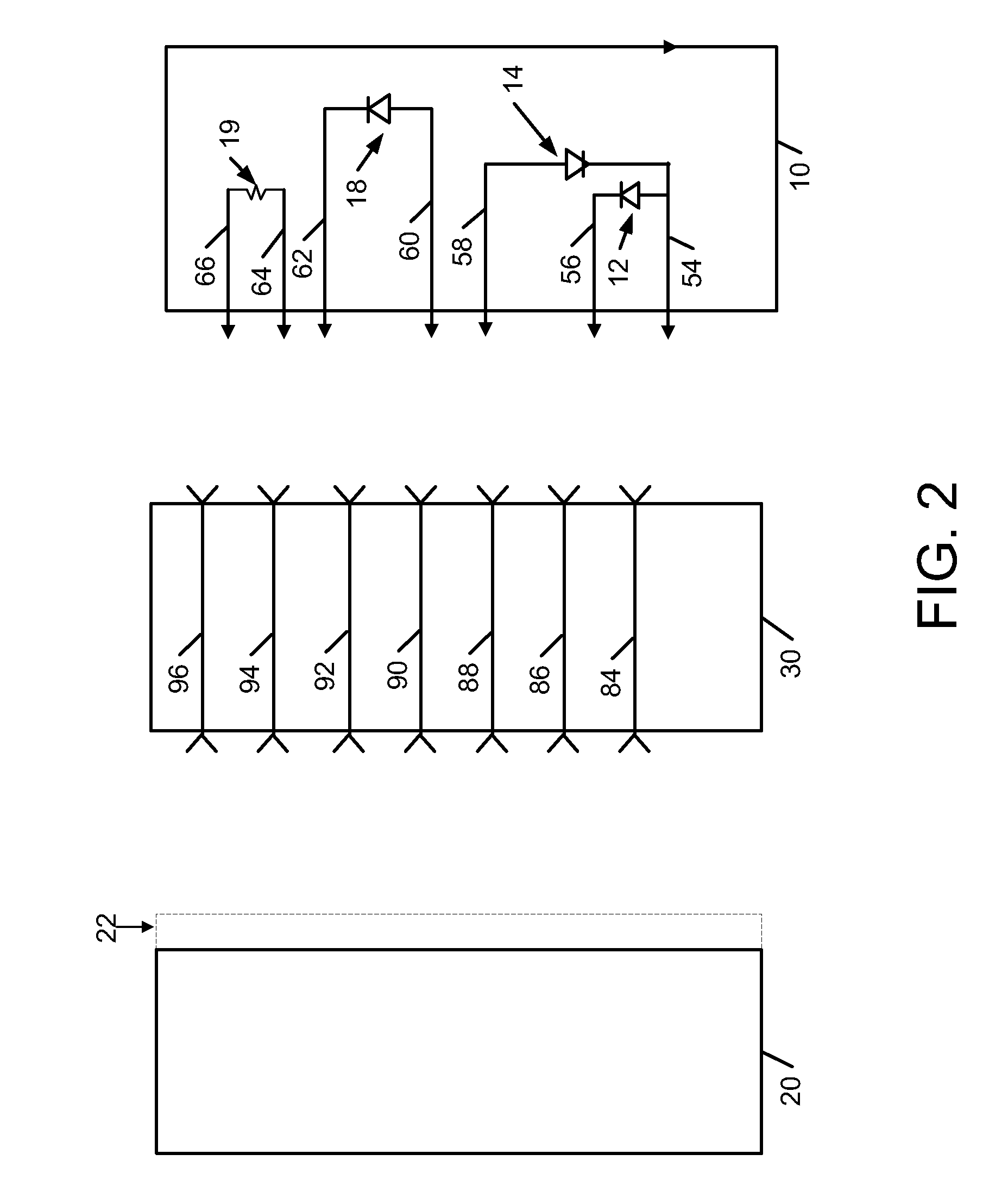System for detecting potential probe malfunction conditions in a pulse oximeter
a pulse oximeter and malfunctioning technology, applied in the field of pulse oximetry, can solve the problems of compromising the initialization process, affecting the initialization process, and the probe may or may not be designed for broad compatibility, so as to improve the identification of probe faults
- Summary
- Abstract
- Description
- Claims
- Application Information
AI Technical Summary
Benefits of technology
Problems solved by technology
Method used
Image
Examples
Embodiment Construction
[0032]In the following description, the invention is set forth in the context of a particular pulse oximetry system—including specific monitor hardware and software and a specific probe—implementing specific initialization processes with a focus on shorts and opens (probe fault) routines. It should be appreciated, however, that the particular pulse oximetry system can vary in accordance with the present invention. Indeed, one objective of the present invention is to accommodate a variety of probes and pulse oximetry environments while reliably and accurately obtaining the desired initialization information. Accordingly, the following description should be understood as exemplifying the invention and not by way of limitation.
[0033]FIGS. 1 and 2 illustrate a photoplethysmographic system of the present invention. As will be described in detail below, the illustrated system is operative to identify and selectively employ sensors, including sensors that are compatible with other systems,...
PUM
 Login to View More
Login to View More Abstract
Description
Claims
Application Information
 Login to View More
Login to View More - R&D
- Intellectual Property
- Life Sciences
- Materials
- Tech Scout
- Unparalleled Data Quality
- Higher Quality Content
- 60% Fewer Hallucinations
Browse by: Latest US Patents, China's latest patents, Technical Efficacy Thesaurus, Application Domain, Technology Topic, Popular Technical Reports.
© 2025 PatSnap. All rights reserved.Legal|Privacy policy|Modern Slavery Act Transparency Statement|Sitemap|About US| Contact US: help@patsnap.com



